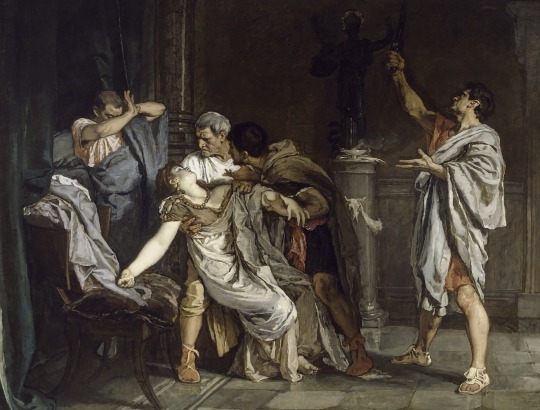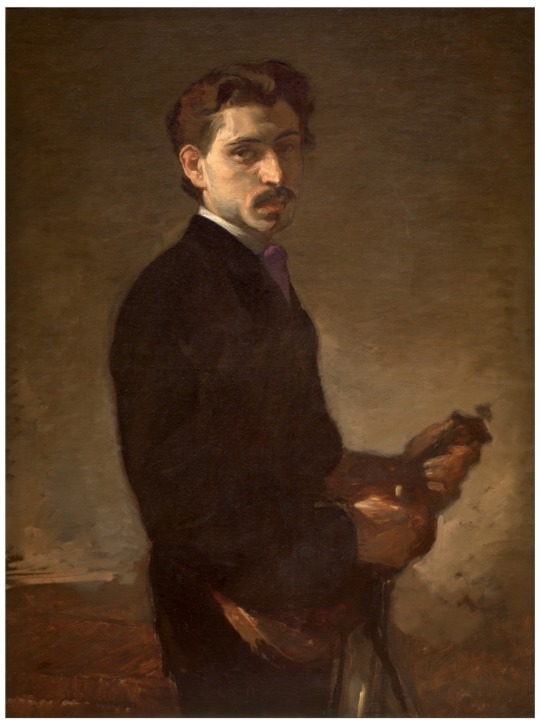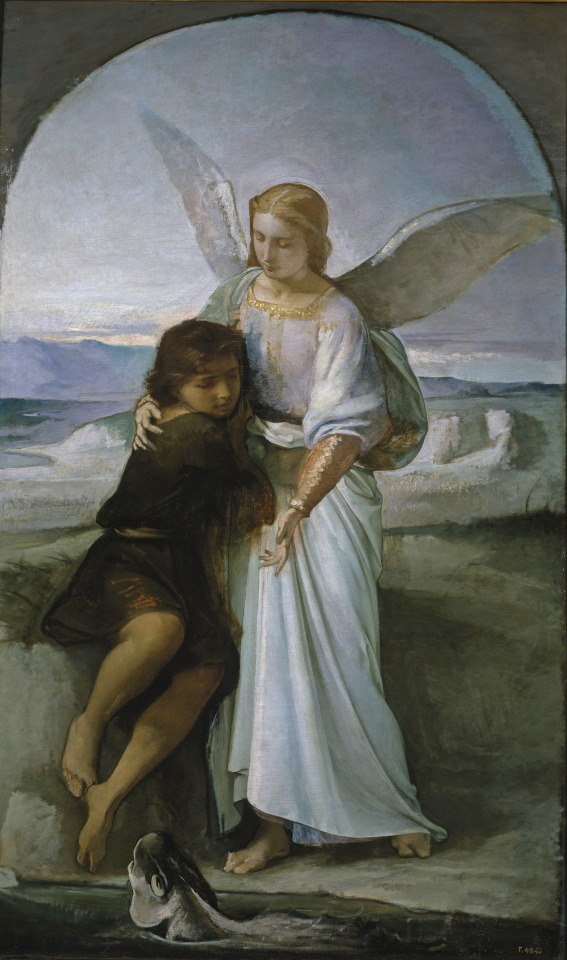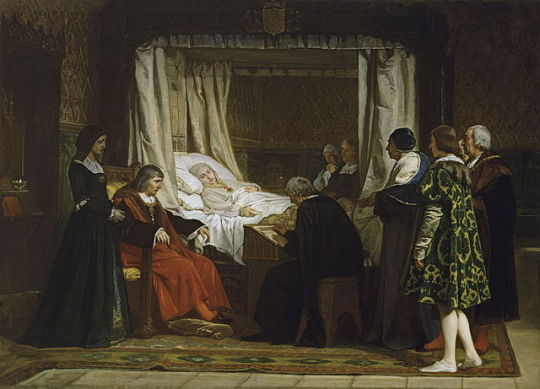#eduardo rosales gallinas
Explore tagged Tumblr posts
Text

Saint Catherine of Siena receiving the Stigmata, after Il Sodoma, 1862 by Eduardo Rosales Gallinas (Spanish, 1836--1873)
430 notes
·
View notes
Text

Eduardo Rosales Gallinas (Spanish, 1836-1873)
Una mujer
90 notes
·
View notes
Text

Eduardo Rosales Gallinas - The death of Lucretia, 1871.
13 notes
·
View notes
Text

The Death of Lucretia by Eduardo Rosales Gallinas (1871)
145 notes
·
View notes
Text

Eduardo Rosales Gallinas (Attributed to) - Portrait of a gentleman
8 notes
·
View notes
Photo

“Portrait of Concepción Serrano, later Countess of Santovenia” by Eduardo Rosales Gallinas (1871)
5 notes
·
View notes
Text

Eduardo Rosales Gallinas (Spanish, 1836-1873) Maximina Martínez de Pedrosa, 1860 Museo Del Prado, Madrid
#eduardo rosales gallinas#original colour#spanish#spain#art#fine art#european art#classical art#europe#european#western civilization#oil painting#fine arts#mediterranean#europa#maximina martinez de pedrosa#1800s#hispanic#latin#iberia#classic art#spanish artist#black hair#black eyes#dark brown hair#dark brown eyes
37 notes
·
View notes
Text

Eduardo Rosales Gallinas, El violinista Ettore Pinelli, 1869 x
1 note
·
View note
Text


Eduardo Rosales Gallinas, 1836-1873
Ophelia, ca.1871, oil on canvas, 60x95 cm
Museo Nacional del Prado (Madrid) Inv. P004623
5 notes
·
View notes
Text

Tobias and the Angel Eduardo Rosales Gallinas––1858
1 note
·
View note
Text

Tobias and the Angel, Eduardo Rosales, between 1858 and 1863
#art#art history#Eduardo Rosales#Eduardo Rosales Gallinas#Purismo#religious art#Biblical art#Christian art#Apocrypha#Book of Tobit#Tobias and the Angel#Spanish art#19th century art#Prado#Prado Museum#Museo del Prado
213 notes
·
View notes
Photo

The Death of Lucretia by Eduardo Rosales Gallinas (1871)
#eduardo rosales gallinas#art#paintings#fine art#19th century art#19th century#neoclassical#neoclassical art#neoclassicism#painting#spanish art#spanish artist#roman#ancient rome#lucretia#roman legend#classic art#art history#classic
407 notes
·
View notes
Text

Eduardo Rosales Gallinas (Spanish, 1836-1873)
Una mujer
50 notes
·
View notes
Photo

Doña Blanca de Navarra entregada al captal de Buch por mosén Pierres de Peralta
1869. Óleo sobre lienzo, 58 x 106 cm.
Eduardo Rosales Gallinas
Blanche II of Navarre (1424-1464). Queen of Navarre. Blanche of Navarre is delivered to the Captal of Buch, who orders imprison her into a castle.
Esta obra tuvo su origen en un encargo realizado por José Olea, coleccionista de obras de Rosales. El pintor la comenzó en Roma en 1868 y la terminó en Madrid al año siguiente. Junto con la Presentación de Don Juan de Austria al emperador Carlos V en Yuste es un buen ejemplo de la adecuación del cuadro de historia a un formato de menores dimensiones, más apropiado para residencias burguesas, y en el que el artista podía dejar ver de cerca la calidad de su pintura. La composición, como en aquella obra, es muy clara, en forma de friso que presenta en el centro a los principales personajes. Lo mismo que en aquella obra, para la que el artista había recurrido a un interior del palacio Chigi en Ariccia como punto de partida para representar una hipotética sala del monasterio de Yuste, Rosales ambientó la escena en un palacio italiano, en este caso el cortile del palacio del Podestá de Florencia. Esto le permitió ordenar la escena con su triple arcada y la escalera por la que descienden las damas de compañía de Doña Blanca, a quien Mosén Pierres de Peralta va a entregar, por orden de Juan II, padre de Doña Blanca, al captal del Buch para su traslado a prisión en castigo a su negativa a contraer matrimonio con Carlos, duque de Berry, hijo de Luis XI de Francia. (x)
3 notes
·
View notes
Photo

Doña Isabel la Católica dictando su testamento (Queen Isabella the Catholic Dictating her Will) Eduardo Rosales Gallinas. 1864. Oil on canvas. 287 x 398 cm.
This was another one of my favorites from my visit to the Prado. It was incredible to see in person. This digital copy doesn’t do it justice.
7 notes
·
View notes
Photo

Eduardo Rosales Gallinas - Queen Isabel la Católica dictating her last will and testament - 1864
Isabella I (Spanish: Isabel, 22 April 1451 – 26 November 1504) reigned as Queen of Castile from 1474 until her death. Her marriage to Ferdinand II of Aragon became the basis for the political unification of Spain under their grandson, Charles I. After a struggle to claim her right to the throne, she reorganized the governmental system, brought the crime rate to the lowest it had been in years, and unburdened the kingdom of the enormous debt her brother had left behind. Her reforms and those she made with her husband had an influence that extended well beyond the borders of their united kingdoms. Isabella and Ferdinand are known for completing the Reconquista, ordering conversion or exile of their Muslim and Jewish subjects, and for supporting and financing Christopher Columbus's 1492 voyage that led to the opening of the New World and to the establishment of Spain as the first global power which dominated Europe and much of the world for more than a century. Isabella, granted together with her husband the title "the Catholic" by Pope Alexander VI.
Eduardo Rosales Gallinas (4 November 1836, Madrid – 13 November 1873, Madrid) was a Spanish painter. He was an adherent of the Italian-based art movement known as "Purismo" and specialized in historical scenes.
18 notes
·
View notes